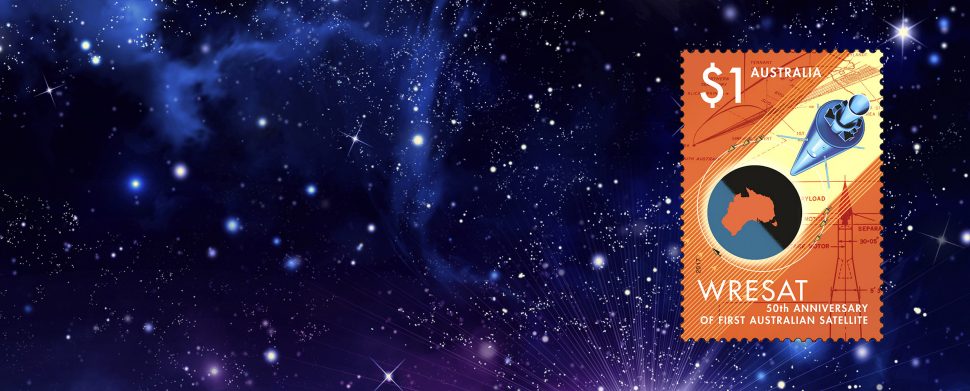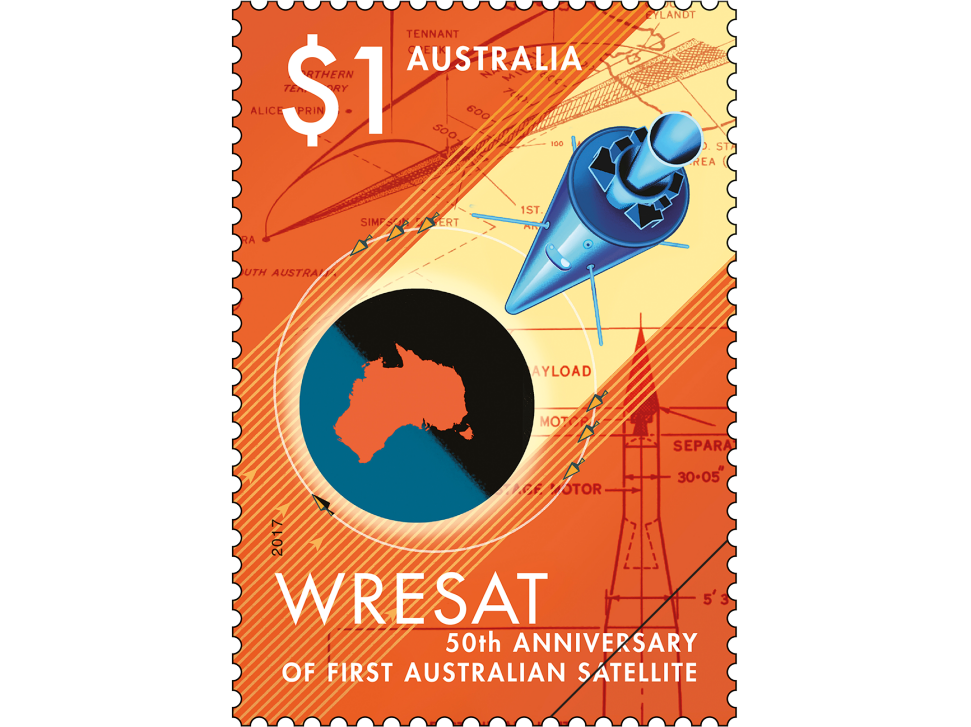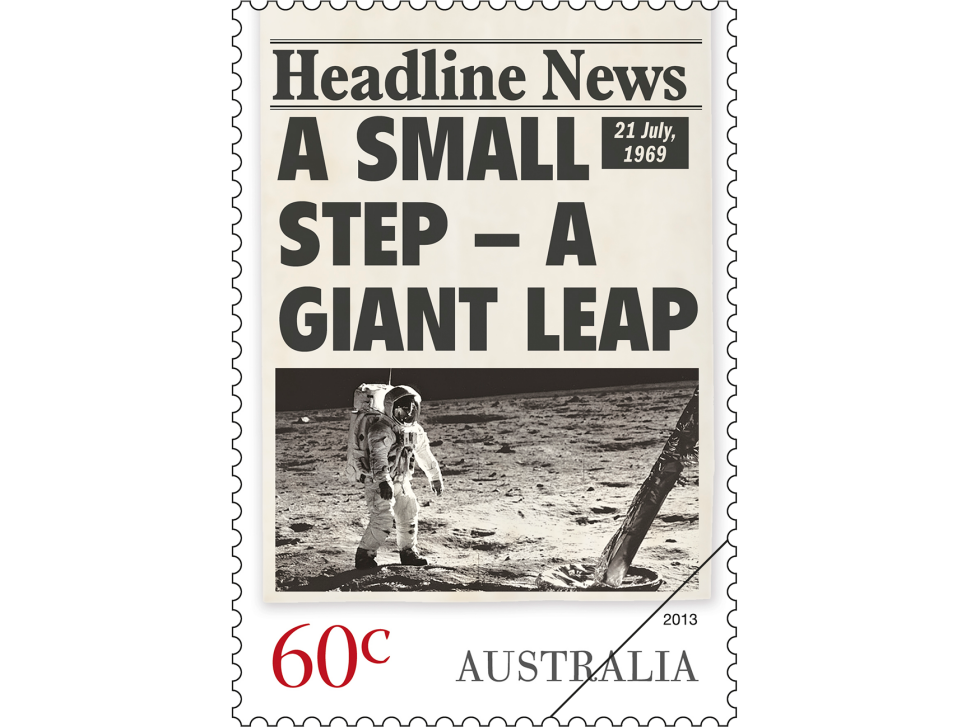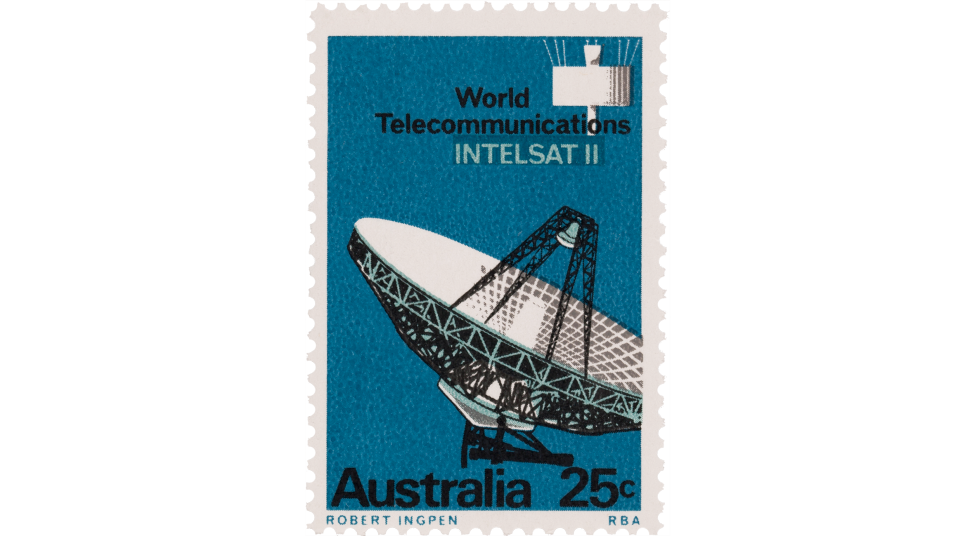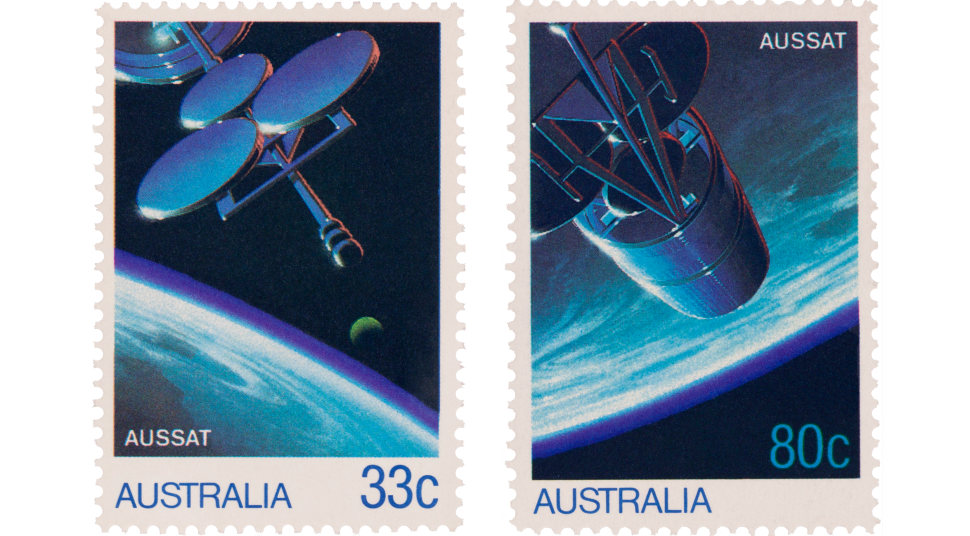Fifty years ago, on 29 November 1967, Australia launched its first satellite, WRESAT (Weapons Research Establishment Satellite), from the Woomera Rocket Range in South Australia.
To commemorate 50 years since this historic occasion, Australia Post is releasing a stamp on 12 September 2017. Designed by Nigel Buchanan, the colourful stamp depicts the conical shape of the satellite and graphically represents its various positions in orbit with a distinct 1960s look and feel.
Australia’s first satellite launch
The WRESAT project was made possible by the generous donation of a spare launch vehicle from an American-led military research program, Project SPARTA, being conducted at Woomera in 1966. Instead of shipping the spare rocket back to America, it was offered to Australia as a satellite launcher.
A rapid development process (so the Project SPARTA team could assist with the satellite launch before returning to America) meant there was no time to advance a solar power system. Instead, WRESAT was battery powered. This meant it only operated for five days, but in this time it completed 642 orbits and transmitted a large amount of data on upper-atmospheric conditions to stations around the world.
WRESAT re-entered the earth’s atmosphere, only to be destroyed by the resultant high temperature on 10 January 1968.
The beginning of the “space age”
Australia’s large size and relatively small population in addition to its location in the Southern Hemisphere have made it a valuable site for space exploration. Our space history began in 1947 when the Woomera Rocket Range was established in South Australia as a warhead testing base for the United Kingdom.
In 1957 Woomera was the launch site for the first Australian-built sounding rocket, “Long Tom”. In 1961 the Parkes Radio Telescope Observatory was established in New South Wales, and in 1969 it famously played a crucial role in telecasting the Apollo 11 Moon landing to the world.
In 2007, Australia Post released a stamp issue commemorating 50 years in space. The stamp issue tracked key events in space exploration, commencing with the launch of the first artificial satellite, Sputnik I by the USSR on 4 October 1957. Sputnik weighed only 83 kilograms. Battery powered, it circled the Earth every 98 minutes and measured space conditions. The stamp issue also commemorated the first Moon walk, in 1969, which as discussed above has an important Australian connection.
This launch of Sputnik marked the beginning of the “space age” as well as the beginning of the space race between the USA and the USSR. The USA launched the world’s second satellite, Explorer I in 1958. By the time of the WRESAT launch, in 1967, Australia was one of the most advanced countries for satellite research and one of only a handful of countries to have successfully launched a satellite.
Satellite technology helps predict the weather
The first Australian commemorative stamps issued in 1968 also related to satellite technology. In this case, the stamps celebrated the new and improved weather reporting system World Weather Watch, adopted by the United Nation’s World Meteorological Organisation, in 1968, for use around the world. The new system used satellites to observe weather conditions and send data via radio signals to three main centres in Moscow, Washington and Melbourne. This was a significant development, and Sunday 23 March 1968 was even designated as World Meteorological Day.
The 20c stamp presents the three main data centre locations on a world map. The top of the stamp includes a graphic depiction some of the technology used in processing and printing the weather-related data, which included computers and teleprinters. The 5c stamp graphically depicts the satellite signals being beamed to Melbourne, via the use of white circular lines. A 25c stamp was also issued, depicting the establishment of regular commercial telecommunication services between Australia and overseas via the INTELSAT II satellite over the Pacific, as well as the Overseas Telecommunication Commission’s new station at Moree, New South Wales.
Satellite beams television and radio nationwide
In 1986, Australia Post released stamps to commemorate the introduction of satellite technology into the realm of radio and television. On 26 January 1986, the ABC began using the Australian national satellite system AUSSAT to beam its radio and television programs across Australia. This was a particularly significant occasion for those in remote rural areas of Australia, as well as Norfolk Island and Lord Howe Island. The first AUSSAT satellite had been launched by the crew of the NASA space shuttle Discovery in August 1985.
Two stamps were issued by Australia Post on 24 January 1986, each showing a representation of the satellite in orbit. At the time of the stamp release, excitement was building as to the potential use of AUSSAT technology beyond television and radio. It was correctly predicted that Telecom (now Telstra) would make use of satellites to improve its telecommunication services, and that satellites would assist with emergency management communications, when other communication lines were disrupted. Financial institutions would also use the technology for transferring funds and data, and mining companies could communicate with their remote outposts, let alone the improved experience for participants in distance education.
View the gallery of stamps and technical details for this issue.
The 50th Anniversary of WRESAT stamp issue is available from 12 September 2017, online, at participating Post Offices and via mail order on 1800 331 794, while stocks last.
This article was produced at the time of publication and will not be updated.
